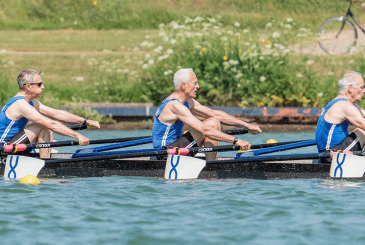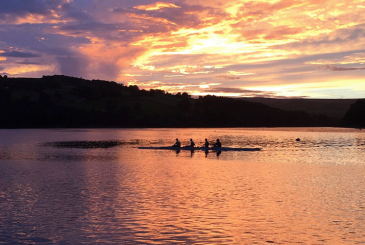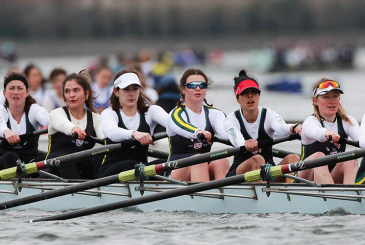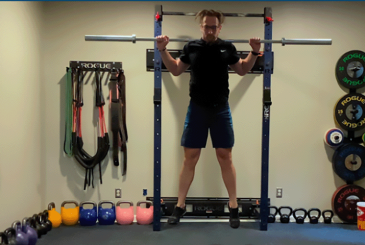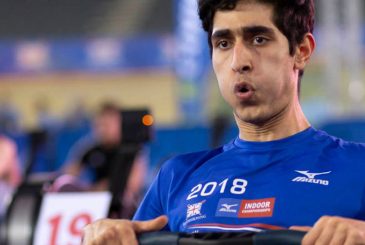Dr Mark Homer explores the science behind the aging process and shares ideas for incorporating other activities to help your rowing in our latest masters article
Elite athletes are performing at the highest level for longer than previously thought possible, and mainstream examples of this are becoming more commonplace.
Cristiano Ronaldo, Serena Williams, Tom Brady and, of course, Steve Redgrave and Katherine Grainger, from our own sport, are/were impressive examples of extended careers, which were testament to these individuals’ professionalism. However, away from the bright lights of high-performance sport, what are the implications of training and competing into – and beyond – middle age? We’ll explore the physiological effects of ageing, and suggest some alternative training options to help you keep up with the ‘whippersnappers’ down at your club.
The ageing process affects all the major systems of our bodies, including those that affect our exercise capacity and the key determinants of rowing performance.
Starting with our cardiorespiratory system, there is a reduction in oxygen delivery to the blood due to a reduced elasticity in the lung tissue. The structures of our heart change and this leads to a reduction in its capacity to increase its beating rate – leading to an approximately 0.7bpm reduction in maximal heart rate every year. As the muscle, strength and function decline, our skin becomes thinner and the ability to sweat efficiently is reduced.
Much of this decline is caused by changes in the nervous (delivery of electrical messages) and endocrine (production and circulation of hormones) systems which have a reduced ability to respond to stimuli and to regulate the various systems of the body that they control.
“Research suggests that those who remain active can reduce the rate of decline in key parameters of exercise performance”
Together, these changes contribute to reductions in the body’s ability to produce power and resist fatigue for endurance exercise such as rowing. For example, maximal oxygen consumption – the body’s ability to extract and use oxygen to produce energy – will typically decline by 10% each decade until 70, then quicker still after that, mainly due to the reduced cardiovascular function discussed previously.
However, what I have not mentioned to this point is that the severity and rate of decline described above is largely dependent on the activity levels of those studied. In fact, it is likely that this is a ‘chicken-and-egg’ scenario where the reduced capacities of the human body that occur with age are likely because of reduced use – rather than ageing being the reason for less activity.
Research suggests that those who remain active can reduce the rate of decline in key parameters of exercise performance, and these effects are even more pronounced, the greater the training stimulus. In fact, if potential peaks were not achieved during one’s youth, it is entirely possible for those technically ‘past their peak’ to achieve personal best scores in their chosen event.
Work done in this area has focused on what type of training is best for masters athletes to achieve their fitness goals – in terms of exercise structure and type. Regardless of exercise modality (more on that later), it appears that maintaining and, potentially, improving cardiorespiratory fitness is dependent on the intensity of the exercise performed rather than the volume. This is good news, as the injury and illness risk of maintaining high-mileage training increases as one ages.
“The maintenance of training, especially high-intensity work, is key in avoiding the drop-off in physiological measures that occur as activity levels decline”
Physiologists at Ball State University completed a longitudinal study testing a small group of elite runners over a 22-year-period and compared changes in the physiological determinants of endurance performance with ‘casual’ athletes and a sedentary group. The authors suggested that the maintenance of such variables in the elite group was due, in part, to the continued inclusion of high-intensity training, more than the volumes being completed.
So, the maintenance of training, especially high-intensity work, is key in avoiding the drop-off in physiological measures that occur as activity levels decline. A great way to maintain such a training load is through the inclusion of cross training – alternative modes of exercise that, while lacking specificity to a chosen sport, still contribute to improved performance.
Cross training has always been a vital component of a rowing training plan (regardless of age), due to the nature of the sport and risk of injury. The following section will provide some suitable options for masters rowers seeking an alternative to the boat or ergo that may help improve on-water performance.
Swimming
Perhaps the most obvious choice for a cross training session is a swim. This whole-body exercise (like rowing) provides a solid workout with the added bonus of being non-weight bearing. With good technique, intensity can be manipulated relatively easily (particularly with the use of floats, pull buoys, flippers or paddles) and for the less graceful, pool running with a suitable buoyancy aid can provide a similar stimulus, if you don’t mind the added attention.
For the more adventurous, open-water swimming is enjoying a real boom in the UK, with plenty of options around. The buoyancy provided by a wetsuit can also make things easier and allow for longer sessions.
Cycling
While normally first choice for the younger rower, road cycling can be intimidating for the uninitiated. Traffic, potholes, and weather can combine to make two wheels a thoroughly unpleasant experience. However, the recent (lockdown-fuelled) increase in indoor cycling options can make this a much more accessible option. Virtual platforms such as Zwift and Wattbike allow for great training, competition, and socialising – all from your garage or spare room. Some of the equipment can be expensive, but cheap options are available and in the unlikely event of a fall, no one is there to see it!
Running/walking
Rowers are not usually good runners, but body-weight loaded exercise can be a beneficial alternative to rowing, cycling or swimming, and a good workout can be achieved if time is short. Make sure you get some suitable footwear, and don’t increase the mileage too quickly. Getting niggles checked out quickly is wise and varying the terrain to include more forgiving surfaces to the pavement is preferable.
Walking is a fantastic way of providing a low-intensity stimulus that can be added to a programme easily without the need to remove more strenuous sessions. It also provides an opportunity to unwind physically and mentally. For the more adventurous, attempting to ‘bag’ some of our island’s higher peaks can count as tough intensity sessions. Again, suitable footwear is key.
“Yoga in the village hall, or Zumba at the leisure centre will help with coordination, flexibility, and agility”
Weight training
Not strictly cross training, strength work is a staple for most competitive rowers’ training programmes. However, if it is not something that currently makes up part of your regular routine, resistance training can help attenuate the declines in muscle mass that occur as we age.
Due to the importance of strength to rowing performance and injury prevention, substituting a cardio session or adding strength training as an additional workout can be greatly beneficial to performance.
Something completely different
Finally, while there is evidence that all the above activities directly benefit your rowing, why not consider something a little more left-field? Often, something one step removed from classic ‘training’ can have some alternative benefits for rowing and health in general. Yoga in the village hall, or Zumba at the leisure centre will help with coordination, flexibility, and agility – while also surreptitiously adding a bonus training session to your programme.
Finally, as we age, the need for recovery between sessions will increase. Repairing muscle damage and refuelling takes longer, and it is vital that you listen to your body and give it the time that it needs to regenerate.
Adaptation occurs when we rest, and not giving yourself time can lead to a downward spiral of under-recovery and under-performance. So, be sure to explore the wide variety of cross training options available to you and try something different, and remember – use it or lose it!
–
–
–
–
–
–
–
–






